Hey! We’ll stop making you mad in your office chair with the pretty landscapes and our little escapades to Angkor Wat to make a short gourmet break in our articles with a Cambodian cooking class we took in Phnom Penh! And who knows, maybe it will give you a last minute idea for your Christmas dinner!
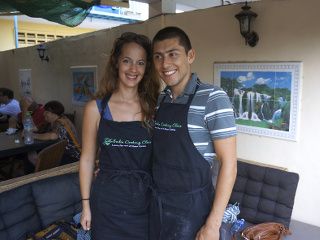 Well we probably won’t be the next Gordon Ramsey (at the same time I’m not sure it’s really a shame), but now we’re ready to cook a great Cambodian meal! On the menu today: spring rolls, fish Amok but also and especially the famous Mango Sticky Rice.
Well we probably won’t be the next Gordon Ramsey (at the same time I’m not sure it’s really a shame), but now we’re ready to cook a great Cambodian meal! On the menu today: spring rolls, fish Amok but also and especially the famous Mango Sticky Rice.
Cooking classes in Asia: a whole institution
Cooking classes are very common and especially very popular, especially in South East Asia.
Whether in Thailand, Vietnam or Cambodia, you will have no trouble finding restaurants or cooking schools that offer courses ranging from a few hours to several days! Exotic flavours, a desire to reproduce this holiday atmosphere once back home, but also the opportunity to discover all new ingredients!
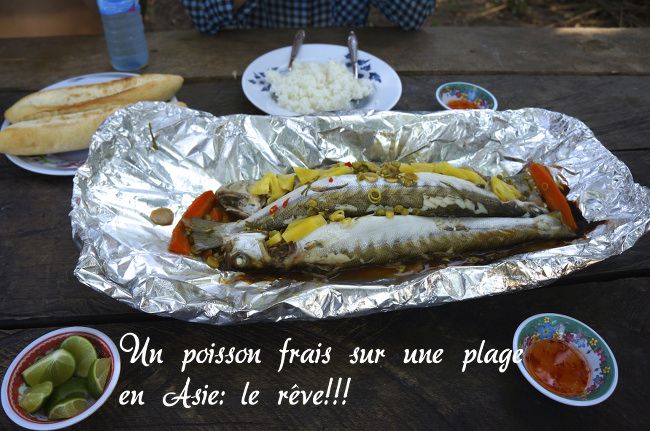
The thing that is really nice about these cooking classes in Asia is that they generally take place in a good mood and without any worries. No need to be great chef already or a samurai when slicing small vegetables: anyone can participate!
Cambodia’s cuisine
Never tell a Cambodian that Khmer cuisine is the same as Thailand! It would be like telling a French person that his cuisine is the same as the german cuisine…
Achhhhh NEIN!
Cambodian cuisine is a blend of flavours that originates from several countries!
If, as in Thailand, there is a lot of coconut milk, rice and peanuts, Khmer cuisine is enriched by many spices from India, rice paste and steam cooking of Chinese origin but also by soups and broths typically Vietnamese!
Due to the French influence in Cambodia, the Khmers are also the biggest consumers of bread in Asia!
And in 4 months in Asia, we can confirm that it is here that we have found the best bread (HAAALELUIA)!
For the novices, here are some dishes and basic ingredients typical of Cambodia:
Amok:
Probably THE most typical dish in Cambodia. The original recipe uses fresh water fish, but there are many variations, including chicken and vegetables. The particularity of this curry is that it is steamed in banana leaves!
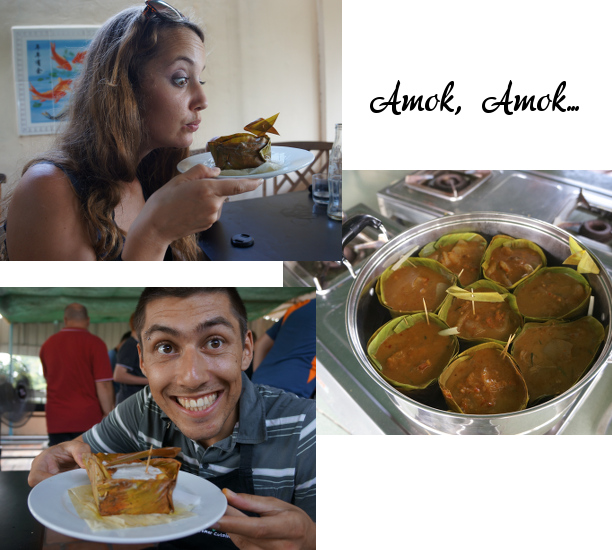
Khmer Coffee:
When you say coffee, you don’t immediately think of Cambodia, I grant you that. But nevertheless we tasted a lot of very good coffees in the area! Khmer coffee is a very strong black coffee with a little chocolate aftertaste!
It is usually served iced with lots and lots of sugar! And if by any chance you like your coffee with milk, it will often be condensed milk! In short, a lot of caffeine and a lot of sugar, nothing better to start the day off right!
Kroeung:
It is an aromatic paste used in Khmer cuisine. To prepare it, you need a mortar, a pillon of great patience and some muscles! These ingredients are usually also added: chilli, garlic, fresh curcumin, lemongrass, lime, peanuts, shallots, pepper and a little salt… The whole is mixed until a very compact paste is obtained…
Prahok:
This is one of the basic ingredients of Khmer cuisine. It is actually a salted and fermented fish paste. In itself nothing very tasty, especially for the smell it gives off but promised it is the best to prepare soups or even the Amok!
Kampot Pepper:
Caramba!!!!! The southern region of Cambodia is well known for its pepper. And the least we can say is that it is delicious! 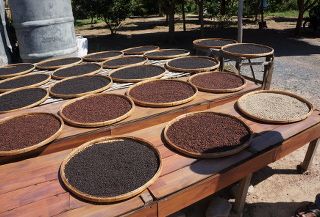 It is consumed in grains (black, red or white), ground, but also fresh!
It is consumed in grains (black, red or white), ground, but also fresh!
Yes, fresh pepper clusters to give an extra flavour to a dish, and it’s delicious too. When Fresh, the taste is much milder than when it’s dried! But beware, real Kampot pepper is very expensive, up to 100$ per kilo for white pepper!
On the markets you can find some at a lower price, but often it is pepper imported from Vietnam or other parts of Cambodia but packaged with the mention Kampot pepper. 😉
 Kdam Chha Mrich Kchei or Kampot pepper crab:
Kdam Chha Mrich Kchei or Kampot pepper crab:
The name says a lot about this absolutely irresistible dish.
When it is eaten on a terrace by the sea in Kep at sunset it is even more delicious!
Believe us, we have tested it for you! 😉
Lok Lak Beef:
Marinated beef served with rice. Traditionally in Cambodia, this dish will still be served with a fried egg on top. Copious!
Banana blossom salad:
To do this, we take a banana flower (which, by the way, looks nothing like a flower more like a long stem), and cut it into very thin strips.
For the preparation nothing is easier. The desired ingredients are mixed in a mortar and crushed with the pestle!
In terms of ingredients, we used lime, Thai basil, peanuts, fresh mint and chicken. A great quick and fresh salad for the summer!
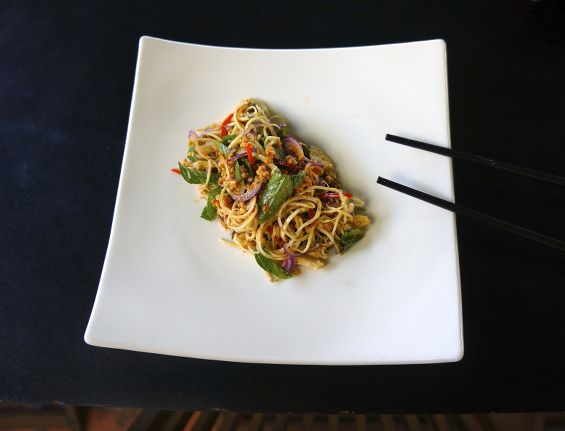
Angkor or Anchor beer:
Beer is a very popular drink in Cambodia. Of course we have devoted ourselves to testing them all. 🙂 Angkor and Anchor are by far the most common. Often the best value for money, especially served draft, they usually cost less than $1 for 3dl.
Things to do in Phnom Penh? A cooking Class!
It was a small poster to our guest that made our mouth water, especially the promise to learn how to make the famous Mango Sticky rice. Mango sticky is our drug since we’ve been in South East Asia!
It didn’t take us much longer to sign up!
It is therefore full of motivation and desire to learn that we went early in the morning to our very first cooking class.
The day starts with a trip to the local market with our teacher of the day. An experience rich in colours, flavours and also in the discovery of many fruits and vegetables!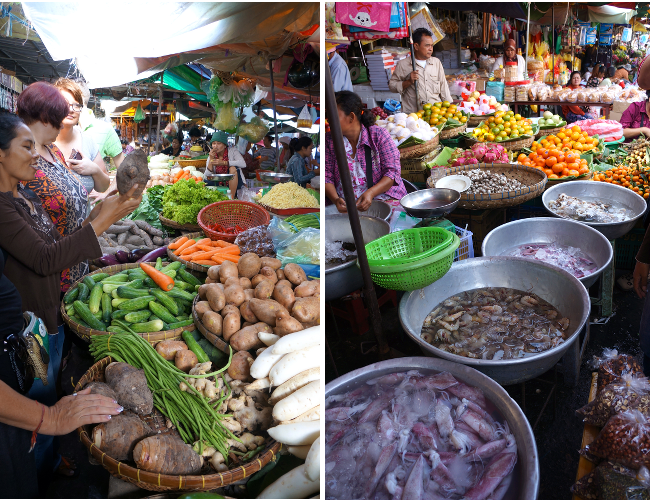
Once the shopping was done we went to the cooking school itself. A large open-air terrace on which there were 20 workstations with all the utensils needed to make our daily menu.
By the way, our menu, let’s get to it! In one day of class we learned to make spring rolls with the little sweet and sour sauce that goes with it, a banana blossom salad with chicken, “fish amok” (a typical dish of Cambodia) and of course Mango sticky rice!
During this day we have not been idle! Preparation of the rolls, peeling, slicing, cutting, cooking, and above all many, many efforts to prepare the famous kroeung! And at the end of the day we finally got our long-awaited mango sticky rice! And the least we can say is that we were not disappointed! 🙂

A perfect Cambodian Chef
Our teacher of the day, Heng, was nicknamed “Lucky 2”. (Well, yes, his brother’s nickname is Lucky, so he had to be creative);)
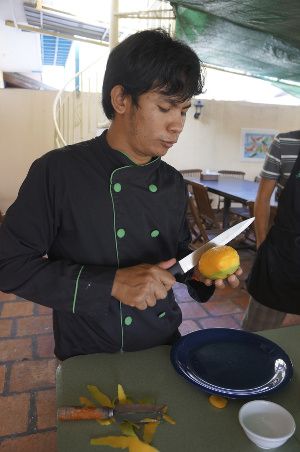 Heng has really been on top all day long! A perfect English, an unfailing sense of humour and above all a boundless passion and motivation. During the discussions, Lucky 2 told us a little more about his past and that’s how we learned that he had learned English and the art of cooking at Friends Café in Phnom Penh.
Heng has really been on top all day long! A perfect English, an unfailing sense of humour and above all a boundless passion and motivation. During the discussions, Lucky 2 told us a little more about his past and that’s how we learned that he had learned English and the art of cooking at Friends Café in Phnom Penh.
Friends Restaurant is a restaurant unlike any other. Indeed there the prices are a little above average but it’s for the good cause! The restaurant’s staff is 100% made up of young people from the neighbourhood, and very often young people who used to live on the street. The “Friends” is part of the organization of the TREE restaurants whose vocation is to give a chance to these young people in difficulty.
The objective? Provide young people with solid training in the field of catering. Whether in the kitchen, at the service or in management. All this while teaching them English so that they can later find work in the booming tourism sector in this country that is just recovering from a long and painful history. When you see Lucky 2, you can only say that these structures are a real success! For more information on TREE restaurants it is over here
What did we think about this day cooking in Phnom Penh?
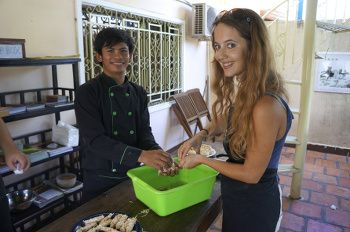 Frankly we left delighted (and with a full stomach)!
Frankly we left delighted (and with a full stomach)!
The dishes we prepared were delicious. And let’s be honest, it’s probably the best menu we’ve ever managed to produce with our bare hands…
We highly recommend!
If we had to express a small concern about the course it would perhaps be that the course is a little too much victim of its success… According to the school, we were supposed to be a small group of between 9 and 16 people, but in the end we were 22! That’s a lot of people. But from what we have seen, Frizz is the only restaurant in Phnom Penh to offer this type of course. But it is likely that it will not stay that way for long and we would not be surprised to see more courses develop in the coming months.
A backpacker trend?
Cooking classes are of course open to everyone. They appeal to many “types” of travellers but we have met quite a few long-distance travellers who had already taken one of these courses. It’s true that the idea has always attracted us! At the same time, it is quite logical that these courses are a great success with backpackers. Well yes, finally something that you can take home and that doesn’t add weight to the backpack! 🙂 It may seem silly, but after almost 4 months of eating exclusively in restaurants or street stands it feels great to get back behind the stove a little!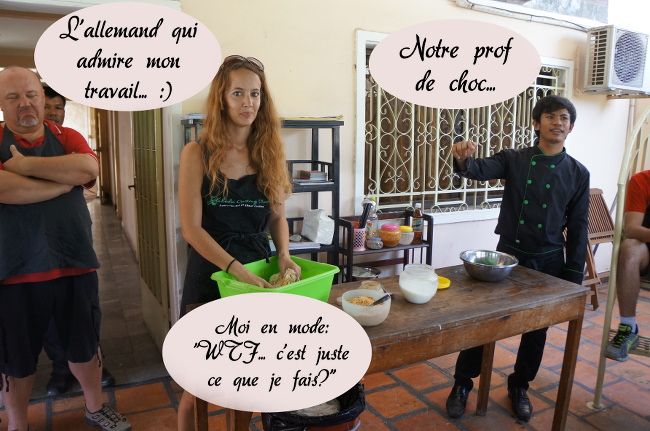
Infos
Cooking Class in Phnom Penh: Restaurant Frizz
Address: #67, Street 240, Phnom Penh
Course offered daily with 2 options:
1/2 day (9h-13h): Visit of the market and preparation of 2 dishes.
Price: 15$ US per person
1 journée (9h-16h): Visit of the market and preparation of 4 dishes.
Price: 23$ US per person
If you know of any other cool cooking classes you’ve tested, feel free to leave them in comments, we’ll add them to the article.
Oh and of course, how could I not finish this article without wishing you a Merry Christmas! Enjoy the holidays! For us, this year will involve beach and crab over the holidays! 😉 Enjoy!
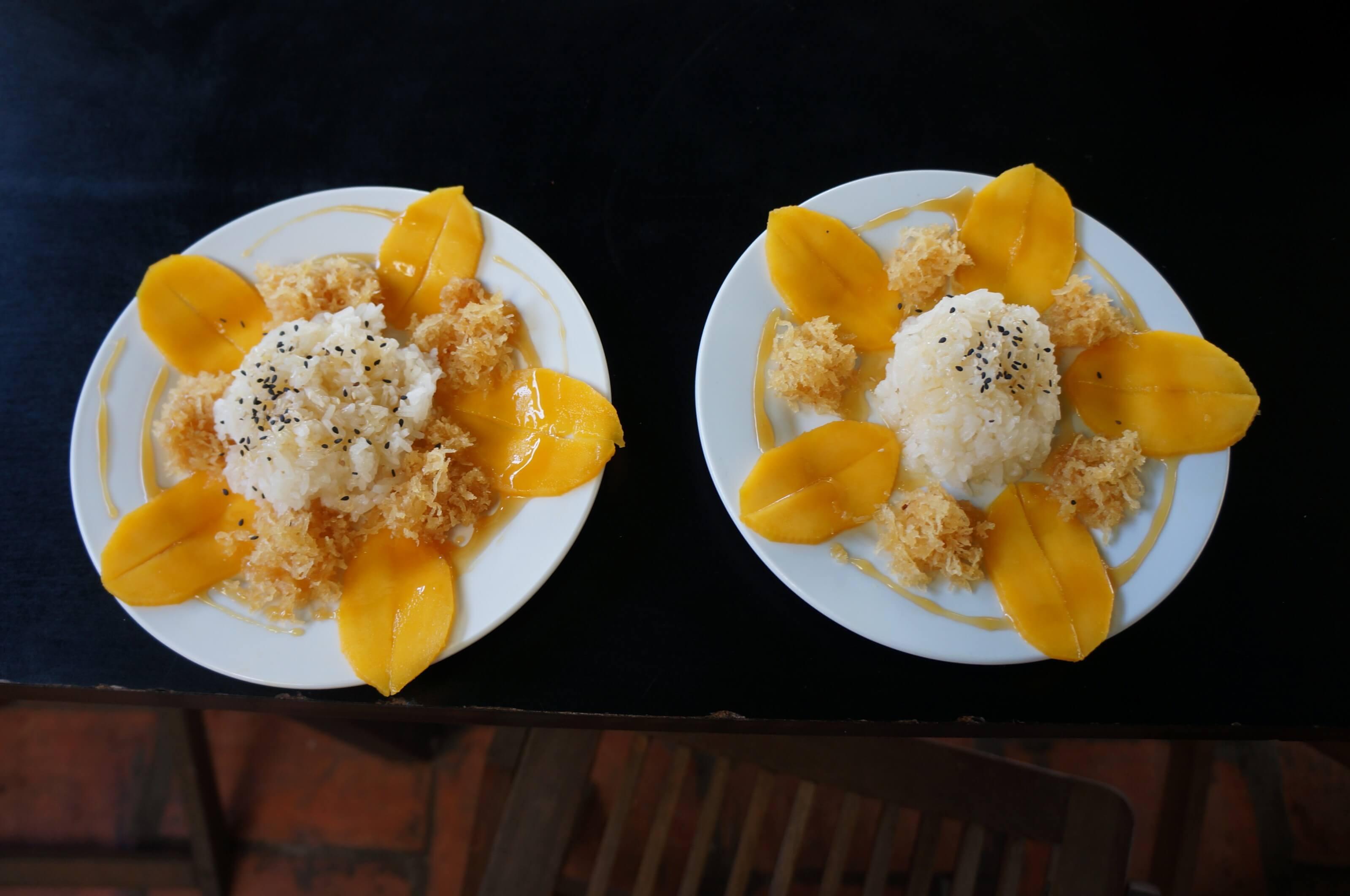
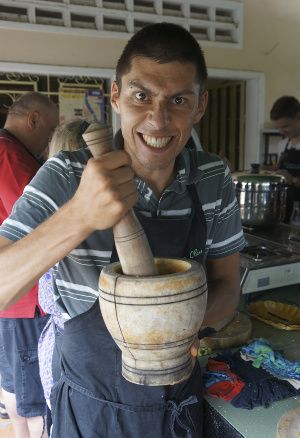
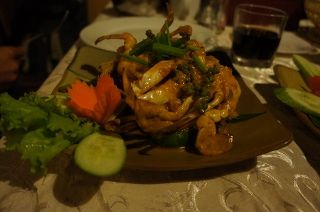 Kdam Chha Mrich Kchei or Kampot pepper crab:
Kdam Chha Mrich Kchei or Kampot pepper crab: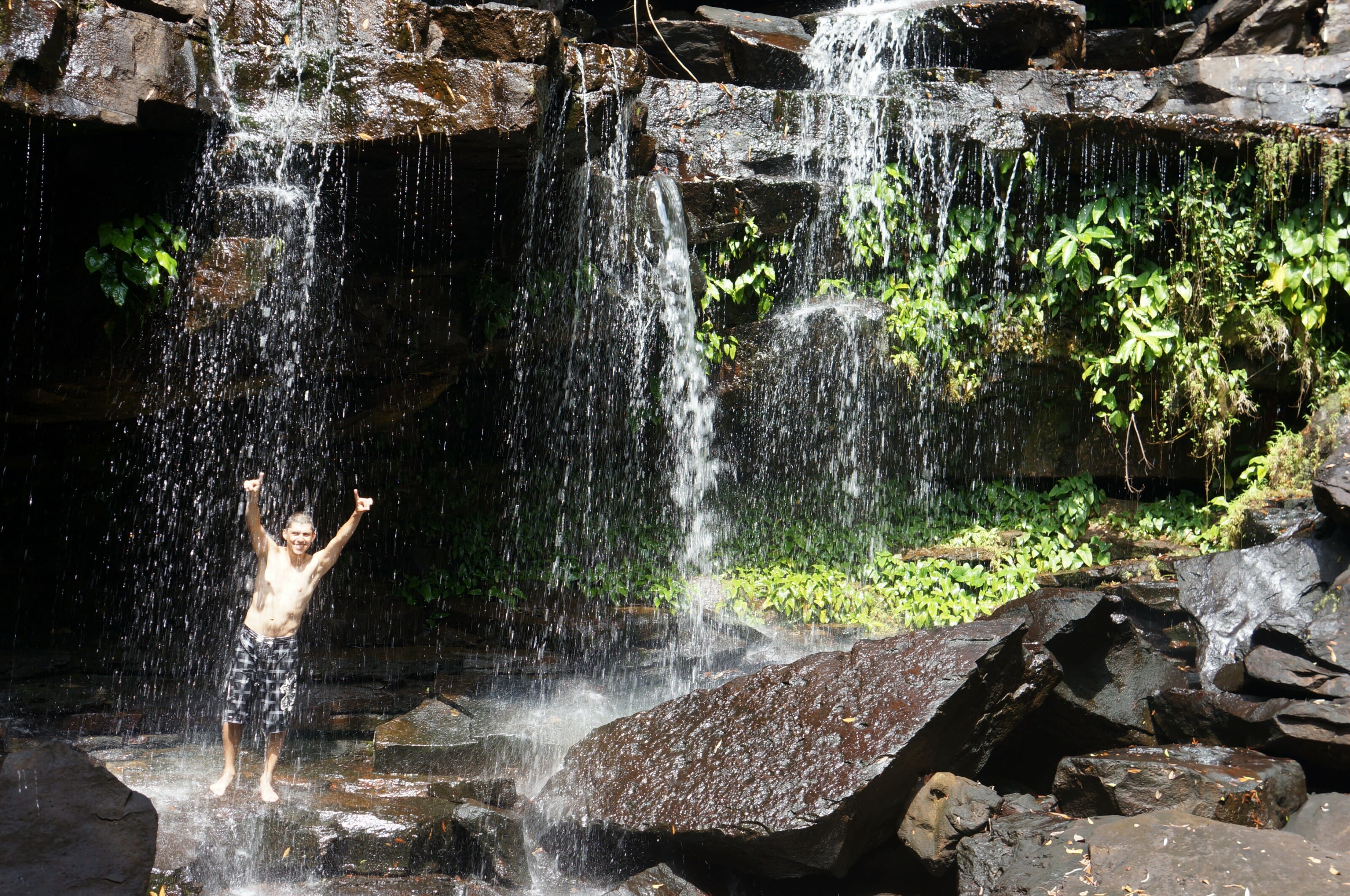
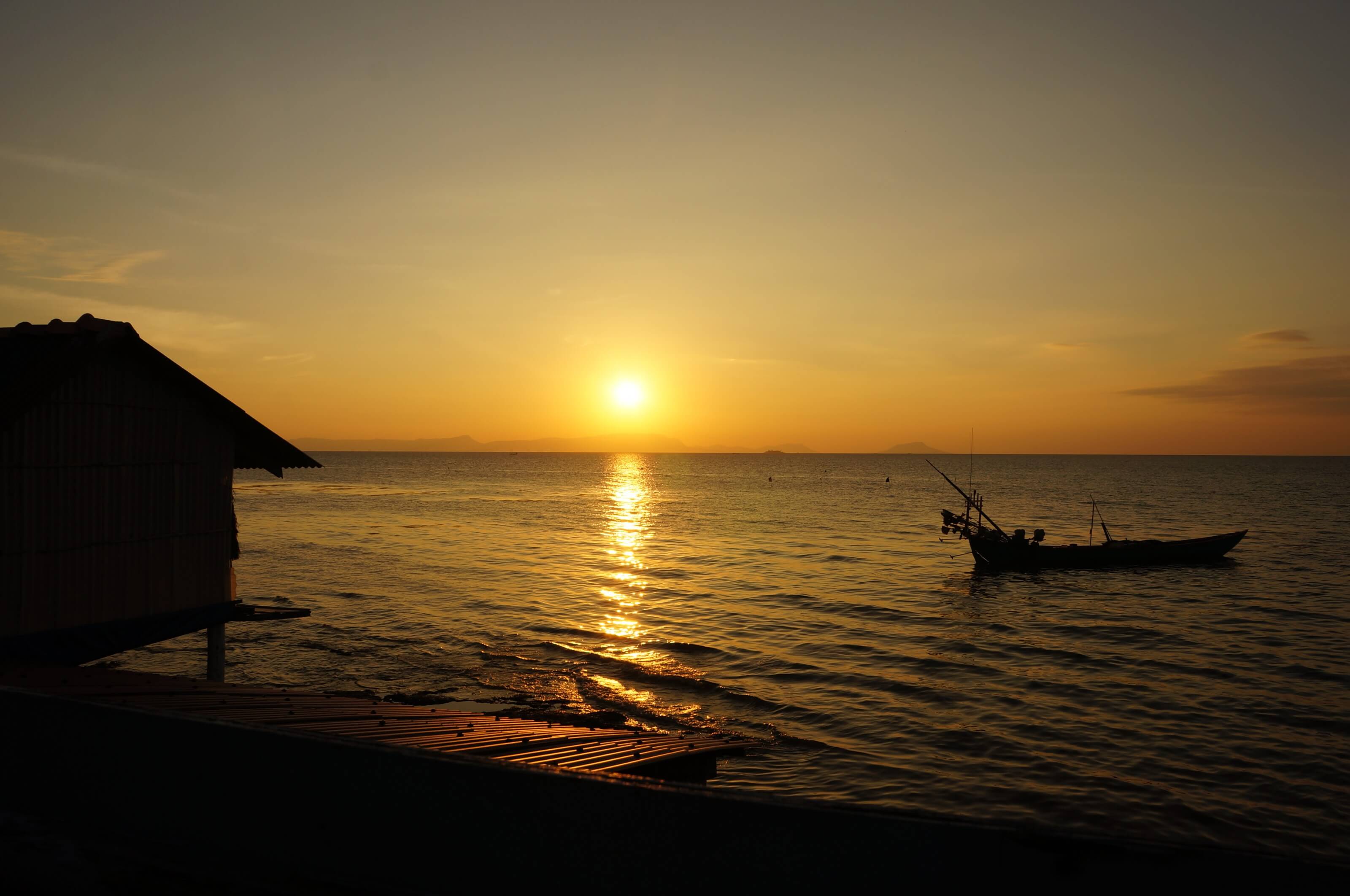

Join the discussion